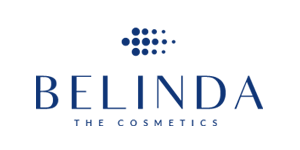Comprehensive Guide to CE Certification and CE Marking under Medical Devices Regulation (EU) 2017/745 Technical Documentation
For businesses looking to access the European market, CE Certification and CE Marking are crucial. These certifications ensure that your products comply with EU health, safety, and environmental requirements, enabling free market access across the European Economic Area (EEA). Specifically, the Medical Devices Regulation (EU) 2017/745 Technical Documentation provides a structured framework for demonstrating compliance for medical devices.
In this article, we will explore the significance of CE Certification and CE Marking, focusing on the Medical Devices Regulation (EU) 2017/745 and its technical documentation requirements. This guide will help businesses navigate the certification process effectively.
What is Medical Devices Regulation (EU) 2017/745?
The Medical Devices Regulation (EU) 2017/745 (MDR) replaced the Medical Devices Directive (MDD) to enhance safety and performance standards for medical devices sold in the EU. Compliance with MDR ensures that medical devices meet strict regulatory standards, covering everything from design to post-market surveillance.
Key Features of MDR
Comprehensive Technical Documentation: Detailed records demonstrating compliance with MDR.
Enhanced Safety Requirements: Stricter rules for risk management and clinical evaluation.
Transparency and Traceability: Unique Device Identification (UDI) system for easy tracking.
Post-Market Surveillance: Ongoing monitoring and reporting of device performance.
CE Marking: Your Gateway to the European Market
CE Marking signifies that a product complies with EU regulations. It’s not just a mark—it’s a declaration of conformity, ensuring products meet high safety and environmental standards.
Why is CE Marking Essential?
Market Access: Required for selling products in the EEA.
Consumer Trust: Demonstrates product safety and reliability.
Legal Compliance: Avoids penalties and legal issues.
Steps to Achieve CE Certification under MDR
Step 1: Determine Device Classification
Medical devices under MDR are classified into four categories based on risk:
Class I (Low Risk)
Class IIa (Medium Risk)
Class IIb (Higher Risk)
Class III (Highest Risk)
Step 2: Prepare Technical Documentation
Your technical documentation must include:
General Safety and Performance Requirements (GSPR)
Risk Management File
Clinical Evaluation Report
Post-Market Surveillance Plan
Step 3: Appoint a Notified Body (if applicable)
For Class IIa, IIb, and III devices, a Notified Body must assess your product.
Step 4: Conduct Conformity Assessment
This involves audits, testing, and reviewing the technical documentation to ensure compliance.
Step 5: Affix the CE Mark
Once compliance is confirmed, the CE Mark can be affixed to the product.
Step 6: Register the Device
Register your device in the EUDAMED database to ensure transparency and traceability.
Key Industries Requiring CE Certification
1. Medical Devices
Compliance with Medical Devices Regulation (EU) 2017/745 Technical Documentation is mandatory for:
Diagnostic equipment
Surgical instruments
Implantable devices
2. Personal Protective Equipment (PPE)
PPE manufacturers must meet CE Certification requirements to ensure safety and reliability.
3. Electronics
Consumer electronics must comply with CE Marking requirements to enter the European market.
Benefits of CE Certification for Your Business
Enhanced Market Reach
CE Certification opens doors to the vast European market, increasing sales opportunities.
Competitive Advantage
CE Marking builds trust among consumers, distinguishing your products from non-compliant alternatives.
Regulatory Compliance
Adhering to MDR protects your business from legal challenges and penalties.
Common Challenges and How to Overcome Them
Complex Documentation Requirements
Preparing technical documentation can be daunting. Seek expert assistance to ensure completeness and accuracy.
Notified Body Delays
Delays in assessments can disrupt timelines. Start the certification process early to avoid setbacks.
Keeping Up with Regulatory Updates
MDR requirements may evolve. Regularly update your documentation and processes to maintain compliance.
Case Study: Successful CE Certification
A mid-sized manufacturer of surgical instruments struggled with MDR’s technical documentation requirements. By partnering with a professional certification company, they:
Streamlined their documentation process.
Passed the Notified Body audit on the first attempt.
Achieved CE Certification within six months, enabling them to export their products across the EU.
Conclusion: Take the Next Step Towards CE Certification
CE Certification under Medical Devices Regulation (EU) 2017/745 Technical Documentation is a crucial step for businesses aiming to access the European market. It ensures product safety, builds consumer trust, and provides a competitive edge.
Don’t let the complexities of CE Certification hold you back. Contact us today to simplify your certification journey and unlock new market opportunities.
- Get Your Legal Advice
- All Experts Lawyers
- All Experts Lawyers
- Great Discounted Rates
- Fighting for The Average Joe
- Get The Money You Deserve
- All Experts Lawyers
- Justice For All


Point of View
Our Vision
A lawyer or attorney is a person who practices law, as an advocate, attorney, attorney at law, barrister, barrister-at-law, bar-at-law, civil law notary, counsel, counselor, counselor, counselor at law, solicitor, chartered legal executive, or public servant preparing, interpreting and applying law, but not as a paralegal or charter executive secretary. Working as a lawyer involves the practical application of abstract legal theories and knowledge to solve specific individualized problems, or to advance the interests of those who hire lawyers to perform legal services.

